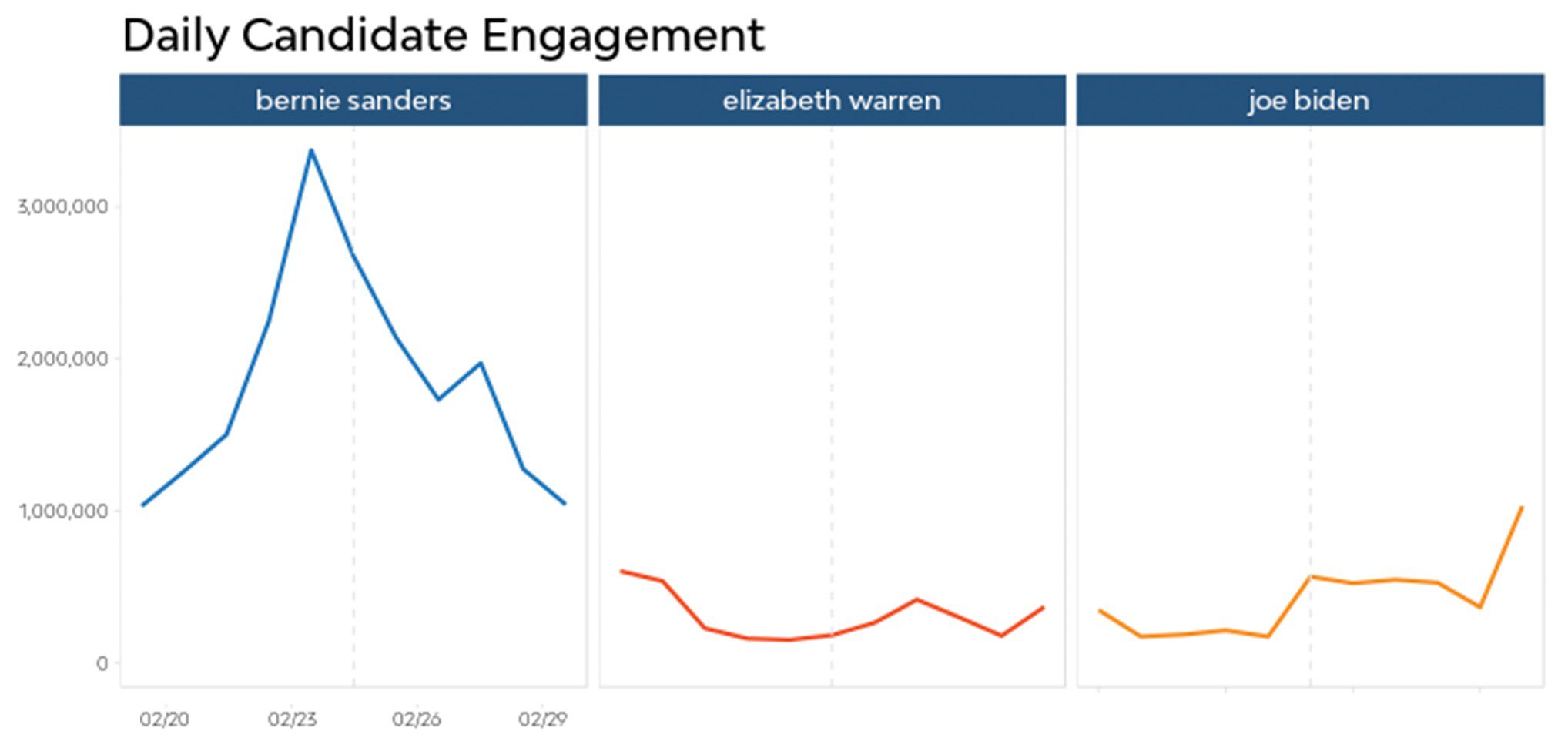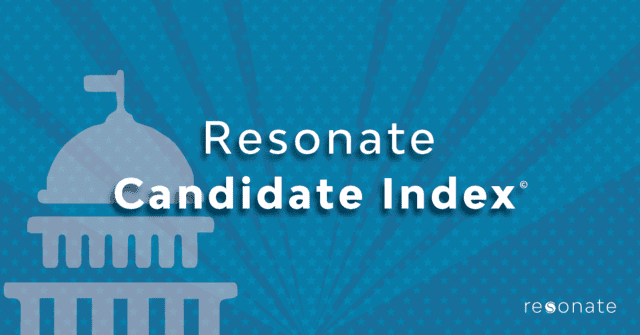If you watched the February 25 debate, you may have wondered whether you were watching Presidential candidates on stage or an episode of a reality show…maybe one where a table gets flipped and a wine glass thrown.
As of that Tuesday’s debate, which preceded the South Carolina Primary, there were six candidates on stage and seven remaining on the ballot (Tulsi Gabbard has not participated in a debate since the November 20, 2019 debate in Atlanta). But, the six that remained all came to the table, or stage, with fists ready.
No surprise, online engagement picked up as viewers tried to make sense of the chaos on stage. And, Resonate’s AI-driven platform was there to anonymously analyze the 10 billion daily online events across more than 550 million devices that would give insights into what voters across the country are thinking before and after the debate.
Spoiler alert: following the February 29 South Carolina primary, Amy Klobuchar, Pete Buttigieg and Tom Steyer all dropped out of the race to endorse Joe Biden, with Michael Bloomberg and Elizabeth Warren dropping out following Super Tuesday. So, for the purposes of this analysis, we won’t look into their engagement.
How does Resonate track online voter engagement?
As the candidate pool gets smaller and smaller, real-time data on voters is a non-negotiable to stay relevant and continue to reach the voters that will determine the 2020 Democratic candidate.
Resonate’s AI-driven voter insights combined with best-in-class survey research and monitoring both online and offline behaviors reveal a dynamic, nuanced picture of the American voter on an individual level. Resonate’s insights are homegrown from trustworthy sources, served fresh daily and go beyond an analysis of the static voter file combined with third-party data. Resonate’s data goes beyond basic demographics and political party, revealing the why behind voters’ decisions to support a cause or candidate, allowing campaigns to connect with their desired voter segment and persuade them more effectively.
Resonate anonymously analyzes 10 billion daily online events on more than 550 million devices across 2 trillion words on over 35,000 topics. AI shows us in real-time which candidates saw the biggest lift or decline in viewings of favorable content about them based on online behavior in the five days prior to, and five days following, the debate. This is what we refer to as the Resonate Candidate Index (RCI). AI reveals a clear picture of where the polls are headed and who the American electorate really views as the winners and losers in each Democratic debate.

Online engagement around the February 25 debate: who won, who lost?
In pundit chatter following the February 25 debate, most agreed that Joe Biden finally caught a break. Where he had floundered in previous debates, he found his footing in South Carolina and made a strong appeal to the voters of the state ahead of the February 29 primary. While it didn’t result in a dramatic upswing in online engagement, there was a clear uptick and it paid off –– Biden won 48.4% of the vote in a state he’d be counting on.
Bernie Sanders’ online engagement, however, was in freefall. He maintained the #1 spot in engagement; however, you can see in the graph that he lost more than half of his daily engagement. This played out at the polls where he captured only 19.9% of the vote.
The other remaining candidate in the field, Tulsi Gabbard, saw little shift in online engagement following the February 25 debate. And, that was reflected at the polls, where Gabbard continued to fall in the bottom of the pack.
Stay tuned for what’s next in 2020
Stay with Resonate throughout the 2020 election season for real-time, AI-driven updates on the Resonate Candidate Index. Our next post-debate engagement check-in will be following the next Democratic debate on March 15, 2020.
Want to go behind the scenes with the AI-driven Ignite platform and learn firsthand how to turn real-time voter insights into action? Schedule a demo today.



